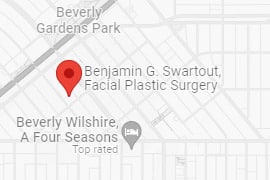Facial reconstruction surgery helps repair areas of the face affected by injury, illness, or congenital defects. It’s often used to restore both function and appearance in a way that supports confidence and quality of life. These procedures may address facial fractures, nerve damage, skin loss, or deformities from trauma, disease, or surgery.
Dr. Swartout, a facial plastic surgeon in Beverly Hills, has extensive experience with these procedures. His approach focuses on safe techniques, clear planning, and tailored solutions that match each patient’s needs. Here’s a look at the most common options and how they work.
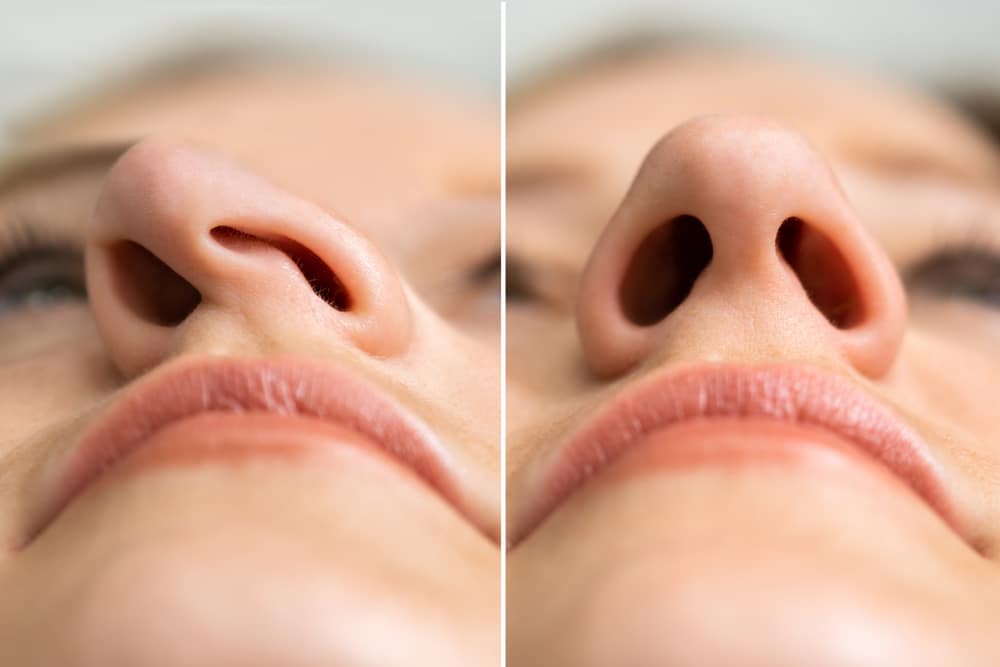
Skin Grafting for Facial Defects in Plastic Surgery
Skin grafting is a fundamental technique in facial reconstruction surgery. It involves taking healthy skin from one part of the body (the donor site) and transferring it to an area where skin is missing due to injury, burns, or tumor removal. The new skin gradually integrates with the surrounding tissue.
There are several types of skin grafts:
- Split-thickness grafts: Include only a few layers of skin
- Full-thickness grafts: Contain the entire dermis for better cosmetic results
- Composite grafts: Include skin plus underlying tissue like cartilage
Dr. Swartout carefully selects the appropriate graft type depending on the defect’s size, location, and depth, aiming for natural appearance and minimal scarring.

Local Flap Reconstruction for Nearby Tissue Repair in Facial Surgery
Unlike skin grafts, local flap techniques use tissue that remains partially attached to its original blood supply. This method is ideal for reconstructing smaller areas, particularly around the nose, lips, or eyelids, where texture and color matching are essential.
There are various types of flaps:
- Advancement flaps: Slide nearby tissue forward
- Rotation flaps: Pivot skin around a defect
- Transposition flaps: Lift and rotate tissue from adjacent areas
These methods offer a precise way to reconstruct facial features with fewer risks of graft rejection or mismatched skin tone.


DISCOVER YOUR FACIAL RECONSTRUCTION OPTIONS WITH DR. SWARTOUT
Learn how Dr. Swartout’s personalized techniques can help restore both confidence and function.
Bone Grafting to Restore Facial Structure
When bone loss occurs from trauma, tumor removal, or congenital conditions, bone grafting becomes necessary. This procedure helps rebuild structural integrity and contour, especially in the jaw, cheekbones, or eye sockets.
Bone can be harvested from the patient’s own body (autograft), such as the hip or rib, or may come from a donor (allograft). In facial plastic surgery, autografts are often preferred for better integration and long-term success.
Dr. Swartout uses bone grafting as part of complex reconstructive and maxillofacial surgery, including nasal reconstruction, jaw surgery, and facial fracture repair. As an experienced reconstructive surgeon, he carefully plans each procedure to restore both appearance and structural support., including nasal reconstruction, jaw surgery, and facial fracture repair.

Nerve Repair and Grafting to Regain Facial Movement in Reconstructive Surgery
In cases of facial paralysis or nerve damage due to trauma or tumor removal, nerve repair techniques aim to restore movement and expression. This is often called facial reanimation surgery.
Options include:
- Direct nerve repair: Reconnecting severed nerve ends
- Nerve grafting: Transplanting nerves from other areas, such as the leg
- Cross-facial nerve grafts: Using nerves from the opposite side of the face
These procedures require high precision and detailed knowledge of facial anatomy. Dr. Swartout’s background in otolaryngology and facial plastic surgery supports successful outcomes.
Cleft Lip and Palate Repair for Congenital Conditions
Cleft lip and palate are common congenital conditions affecting the nose, lips, and mouth. Reconstruction helps close the gap, restore function, and improve appearance.
Cleft surgery is typically performed in stages and may involve:
- Soft tissue reconstruction
- Nasal reshaping (rhinoplasty)
- Speech and feeding support
Dr. Swartout provides long-term surgical planning to ensure children and adults with cleft conditions regain full function and confidence.
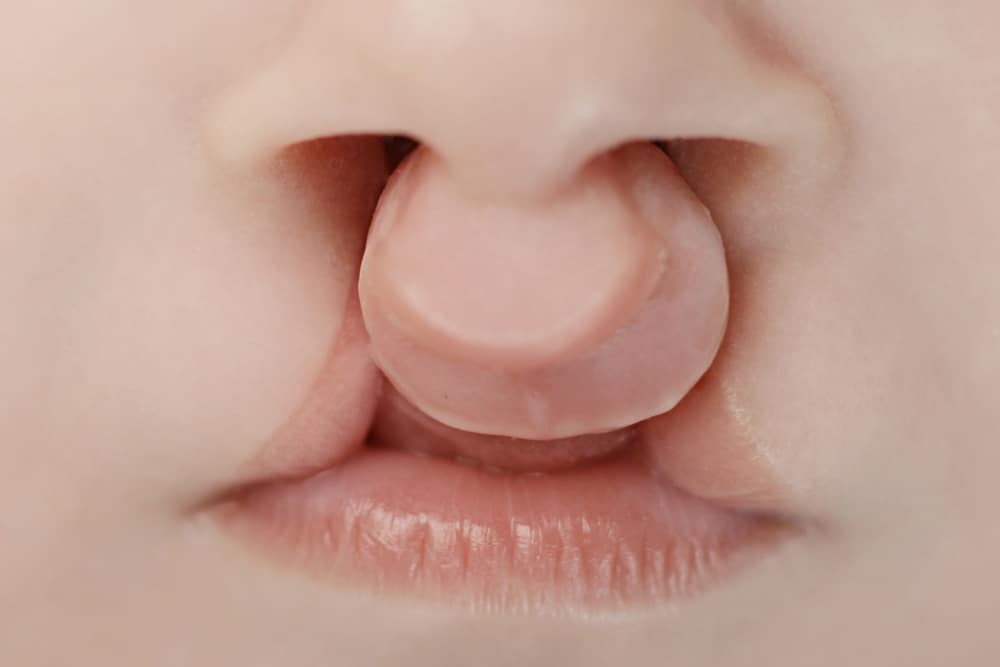
Nasal Reconstruction and Rhinoplasty After Injury or Cancer
The nose is central to both appearance and breathing. Nasal reconstruction is often necessary after trauma, infection, or skin cancer treatment, such as Mohs surgery.
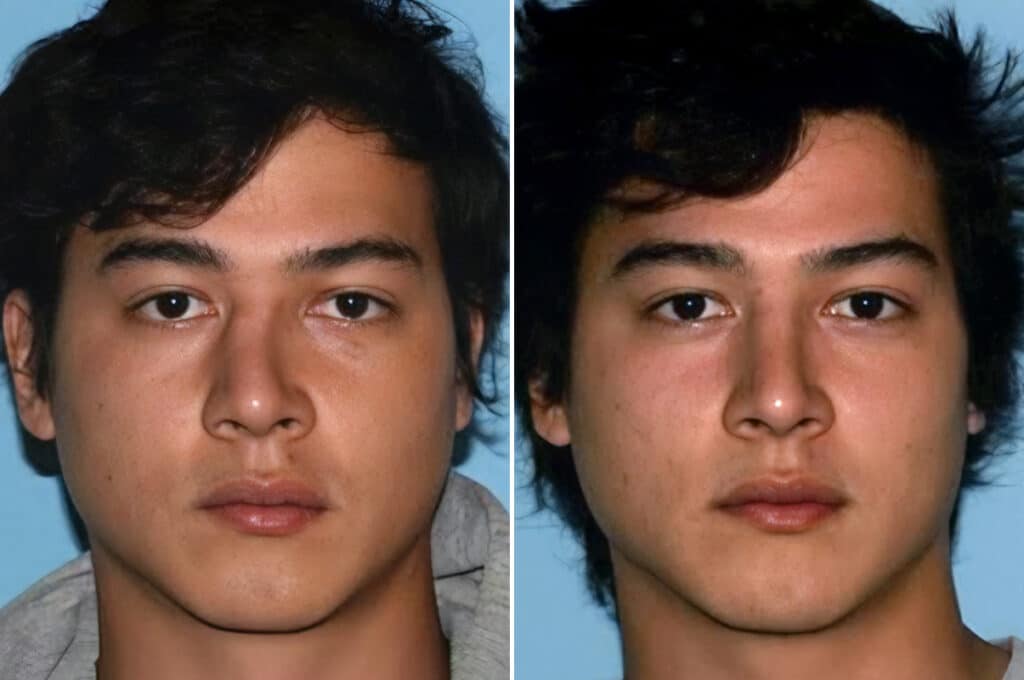
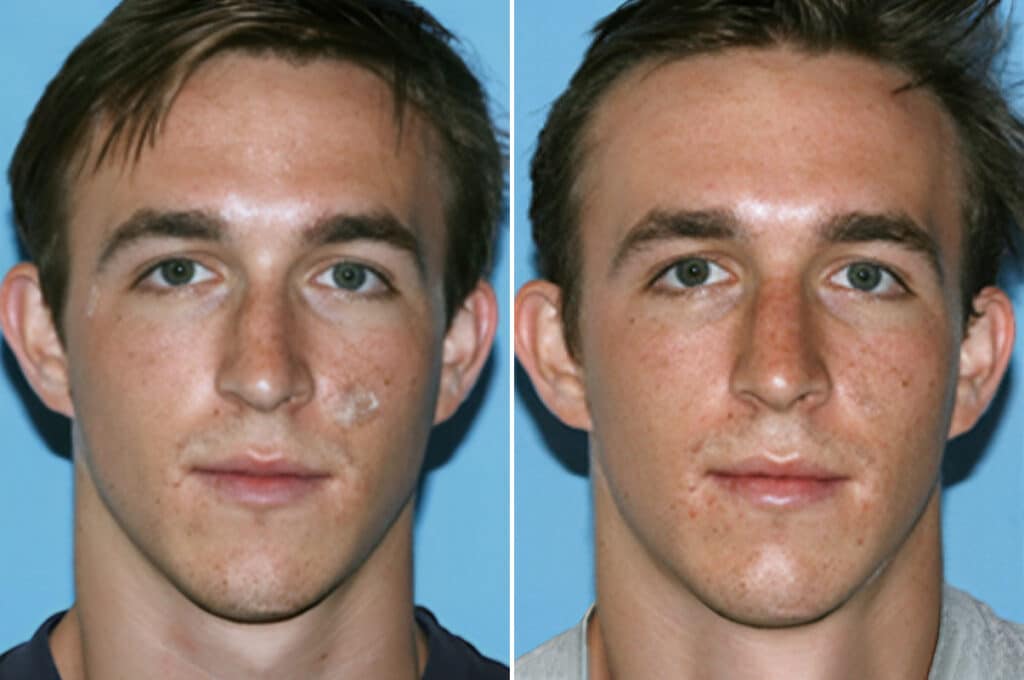
This complex facial reconstruction surgery may involve:
- Cartilage grafts from the ear or rib
- Skin flaps from nearby tissue
- Structural rebuilding with bone or soft tissue
As a specialist in rhinoplasty and nasal surgery, Dr. Swartout designs detailed plans that address both the cosmetic and functional needs of each patient.
Eyelid Surgery and Reconstruction to Protect Vision and Appearance
Eyelid surgery is critical when trauma, tumor removal, or congenital defects affect this delicate structure. Reconstruction ensures eyelids close properly, protect the eye, and maintain a natural appearance.
Procedures include:
- Skin grafts or flaps to repair tissue loss
- Realignment of eyelid muscles
- Correction of eyelid malposition
Eyelid reconstruction often overlaps with cosmetic procedures, making a dual aesthetic and functional approach necessary.
Ear Reconstruction for Trauma or Congenital Absence in Facial Plastic Surgery
Missing or malformed ears can result from birth conditions like microtia or from trauma. Reconstructive ear surgery aims to rebuild the ear’s natural shape using cartilage grafts or synthetic implants.
Steps typically include:
- Cartilage framework creation (often from the rib)
- Skin grafting to cover the framework
- Symmetry adjustments with the opposite ear
Dr. Swartout takes a staged approach to ear reconstruction to ensure safe healing and aesthetically pleasing results.
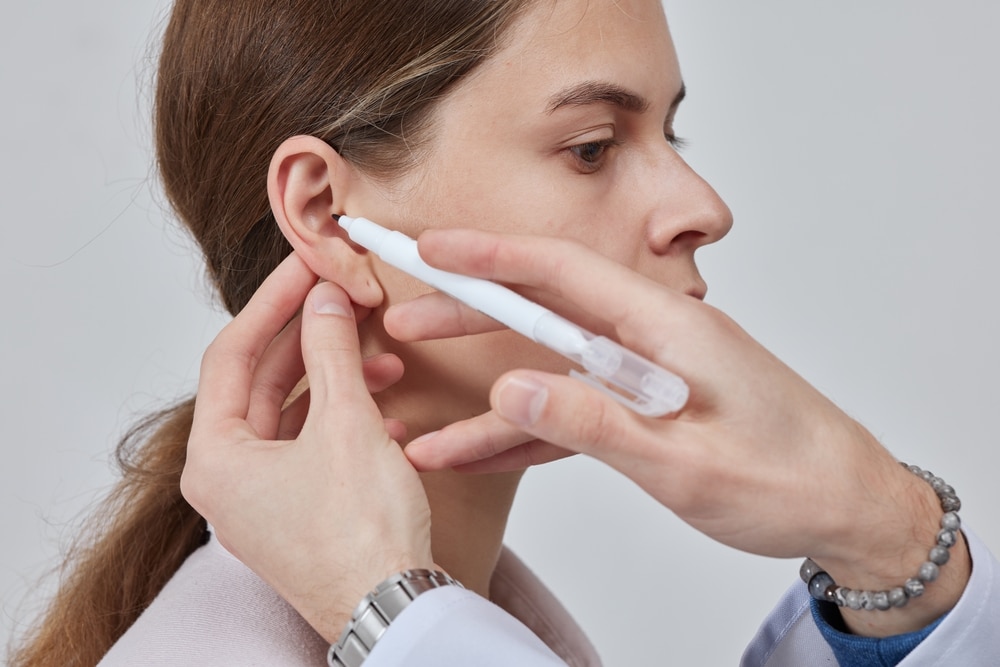
Lip Reconstruction to Restore Function and Expression
Lip reconstruction is essential for maintaining speech, eating, and expression. Whether due to cancer surgery, trauma, or congenital deformities, reconstructing the lips requires technical skill and a strong eye for balance.
Reconstructive techniques vary and may include:
- Local flaps for small defects
- Free tissue transfer for larger reconstructions
- Muscle reattachment for movement restoration
Dr. Swartout combines function and facial aesthetics to achieve natural lip appearance and oral function.
Facial Trauma Reconstruction to Restore Form and Function
Facial injuries from accidents, sports, or trauma often lead to complex damage, including broken bones, soft tissue loss, and nerve injury. Comprehensive facial trauma reconstruction involves restoring bone structure, minimizing scarring, and preserving function.
Techniques used may include:
- ORIF (open reduction and internal fixation) for facial fractures
- Soft tissue repair
- Scar revision and injectable fillers
Prompt care from a skilled facial plastic surgeon like Dr. Swartout ensures better healing and optimal long-term results. His surgical techniques are designed to minimize incisions whenever possible and reduce visible scarring.
Reconstructive and Cosmetic Procedures: What’s the Difference?
While facial reconstruction surgery is typically performed to restore function and appearance after trauma or illness, cosmetic procedures such as facelifts and brow lifts are primarily focused on enhancing aesthetics. However, these two types of procedures can often overlap—especially when reconstructive goals include symmetry, contouring, or rejuvenation.
Facial plastic surgeons like Dr. Swartout are uniquely qualified to perform both reconstructive and cosmetic facial surgery. For example, a facelift might be part of a reconstructive plan for someone with significant facial asymmetry, while a brow lift could complement eyelid reconstruction to ensure natural positioning and expression. Understanding this relationship allows patients to benefit from a more holistic, integrated approach to facial surgery.
Facial Reconstruction Goals and Results with Dr. Swartout in Beverly Hills
Facial reconstruction surgery is about more than just restoring form – it’s about helping patients feel whole again. Whether you’re recovering from trauma, illness, or a congenital condition, Dr. Swartout works closely with you to develop a treatment plan that matches your goals and respects your individuality.
At his Beverly Hills practice, patients benefit from:
- Specialized training in facial plastic surgery and otolaryngology
- Personalized consultations and care
- Advanced techniques tailored to facial symmetry and function
If you or a loved one needs expert facial reconstruction, don’t wait. Schedule a consultation with Dr. Swartout today to explore your options and take the next step toward healing and confidence. Contact LA Facial Plastic Surgery in Beverly Hills to request your consultation and learn more about available facial reconstruction surgery procedures.

